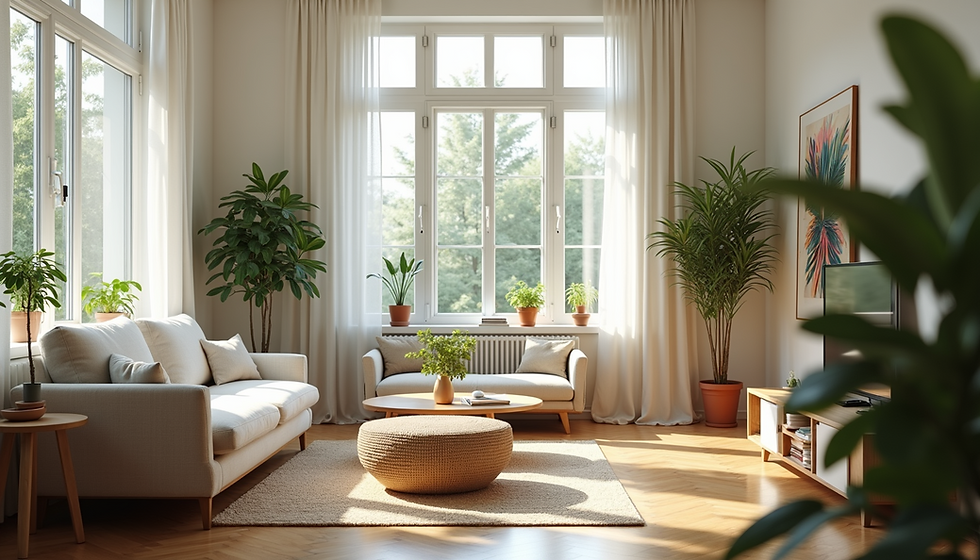The Role of Art in Architectural Spaces
- Param J Singh
- Oct 10
- 3 min read
Architecture is more than just the construction of buildings; it is a canvas where art breathes life into spaces. The integration of art in architecture transforms ordinary structures into extraordinary experiences. This fusion creates environments that inspire, evoke emotions, and reflect cultural values. Understanding the role of art in architectural spaces reveals how creativity and design converge to shape our surroundings.
The Importance of Art in Architecture
Art in architecture serves multiple purposes beyond aesthetics. It enhances the functionality and atmosphere of a space, making it more engaging and meaningful. Artistic elements can influence how people interact with a building, encouraging exploration and connection.
For example, murals and sculptures in public plazas invite visitors to pause and reflect, while intricate tile work in a lobby can create a sense of luxury and craftsmanship. Art also helps define the identity of a place, linking it to history, culture, or community values.
Incorporating art into architectural design can:
Create focal points that draw attention and guide movement.
Enhance natural light and shadow play through sculptural forms.
Introduce texture and color that complement structural materials.
Promote sustainability by using recycled or natural artistic materials.
Encourage social interaction by providing shared visual experiences.
How Art Shapes the Experience of Architectural Spaces
The experience of a building is deeply influenced by its artistic components. Art can transform a sterile environment into a welcoming and stimulating place. It affects mood, perception, and even behavior.
Consider a hospital waiting room adorned with calming paintings or a corporate office featuring abstract sculptures. These artistic touches reduce stress and foster creativity. In religious or cultural buildings, art often carries symbolic meaning, enriching the spiritual experience.
Architects and artists collaborate to ensure that art complements the building’s purpose and enhances user experience. This collaboration can result in:
Site-specific installations that respond to the environment.
Interactive art that engages visitors physically or digitally.
Light and shadow manipulation to create dynamic atmospheres.
Use of natural elements like water features or living walls as art.
The thoughtful integration of art in architecture elevates the space from mere shelter to a place of inspiration and connection.
What is Art Design and Architecture?
Art design and architecture are intertwined disciplines that combine creativity with technical skill to shape our built environment. While architecture focuses on the structure and function of buildings, art design emphasizes aesthetics, symbolism, and emotional impact.
The term art and architecture design refers to the holistic approach where artistic vision and architectural planning merge. This approach considers:
Form and function working in harmony.
Materiality and texture that appeal to the senses.
Cultural narratives expressed through design elements.
Innovative techniques that push creative boundaries.
For instance, the use of stained glass in cathedrals is both an architectural feature and an artistic expression. Similarly, contemporary buildings may incorporate digital art or kinetic sculptures as part of their design.
Understanding this synergy helps architects and designers create spaces that are not only practical but also emotionally resonant and visually compelling.
Practical Ways to Incorporate Art in Architectural Spaces
Integrating art into architecture requires thoughtful planning and collaboration. Here are some practical recommendations for successfully blending art with architectural design:
Start Early in the Design Process
Involve artists and designers from the beginning to ensure art complements the architecture seamlessly.
Choose Site-Specific Art
Tailor artworks to the location, history, and function of the building for greater relevance.
Use Diverse Art Forms
Incorporate murals, sculptures, installations, lighting, and landscaping to create layered experiences.
Consider User Interaction
Design art that invites touch, movement, or participation to engage occupants actively.
Balance Aesthetics and Functionality
Ensure that artistic elements do not compromise structural integrity or usability.
Leverage Technology
Use digital projections, augmented reality, or kinetic art to add dynamic features.
Focus on Sustainability
Select eco-friendly materials and designs that promote environmental responsibility.
By following these steps, architects and designers can create spaces that are visually stunning and functionally effective.
The Future of Art in Architectural Spaces
As technology and cultural values evolve, the role of art in architecture continues to expand. Future architectural spaces will likely feature more interactive and adaptive art forms that respond to environmental conditions and user needs.
Smart buildings may incorporate digital art that changes with time of day or weather. Virtual and augmented reality could allow occupants to customize their surroundings artistically. Additionally, there is a growing emphasis on inclusivity and diversity in art, reflecting broader social changes.
Sustainability will also drive innovation in materials and methods, blending natural and artistic elements to create healthier environments. The collaboration between artists, architects, engineers, and communities will be crucial in shaping these future spaces.
Exploring the role of art in architectural spaces reveals a rich dialogue between creativity and structure. This relationship enhances our environments, making them more than just places to live or work - they become expressions of culture, emotion, and innovation.
.png)



Comments